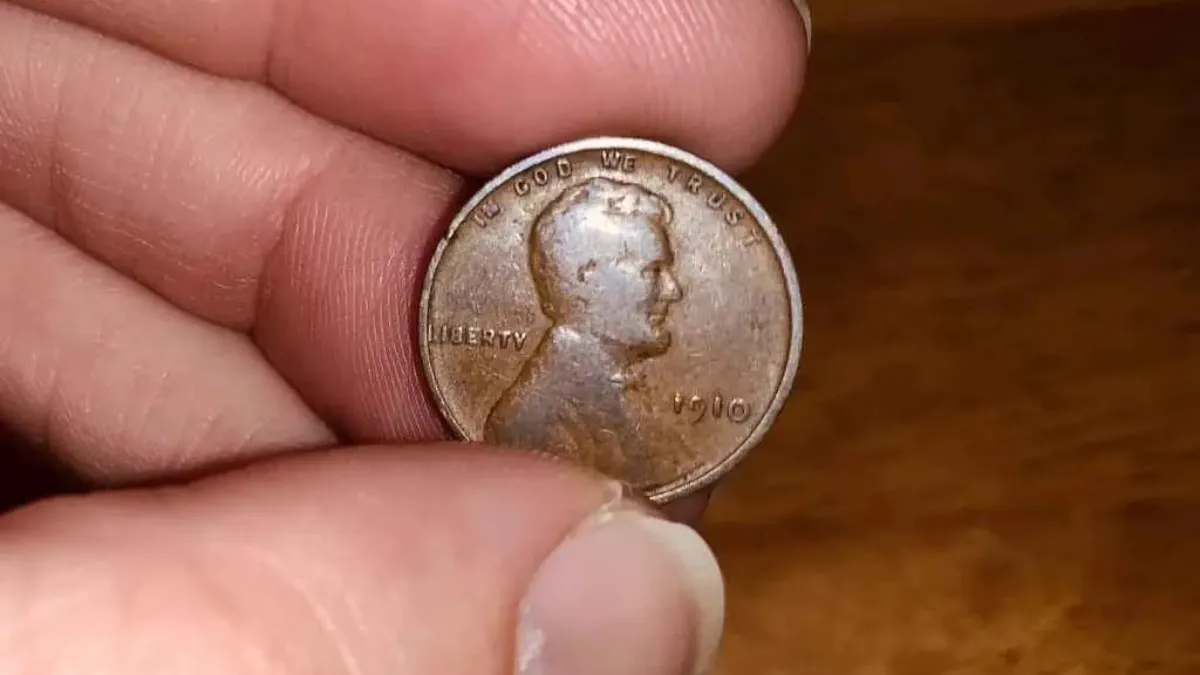The 1910 Penny: A Collector’s Favorite
The 1910 penny is highly regarded by coin enthusiasts.
There are different types of 1910 wheat pennies, all of which are quite rare, especially in exceptional condition.
So, how can you determine if your 1910 Lincoln cent is worth hundreds of dollars or if it’s a more common wheat penny worth under a dollar?
The 1910 penny is a rare coin, with values ranging from 25 cents to over $100. Here’s what you need to know:
Table of Contents
- How much is a 1910 Lincoln cent worth?
- Are There Any 1910 Penny Errors?
- How can you tell if you have a rare 1910 wheat penny?
How much is a 1910 Lincoln cent worth?
Did you find some old pennies in your pocket change?
If you happen to have any 1910 Lincoln cents, you could be holding a valuable coin!
The value of 1910 Lincoln wheat pennies ranges from 25 cents to more than $100, depending on the coin’s condition and whether or not it has a mintmark.
Did You Know? A mintmark is a small letter found under the date on a coin, indicating the U.S. Mint facility where it was minted.
Here’s the breakdown:
- A 1910 penny without a mintmark was minted at the Philadelphia Mint.
- A 1910-S penny was produced at the San Francisco Mint. (1910-S pennies are much rarer than those without a mintmark!)
Here are the specific values for 1910 wheat pennies:
- A circulated 1910 Lincoln cent from Philadelphia is worth anywhere from 25 cents in worn condition to $20 in uncirculated condition.
- A 1910-S penny can be worth significantly more, ranging from $12 in well-worn condition to over $100 in uncirculated condition.
- The 1910 proof penny, made at the Philadelphia Mint for collectors, is valued at approximately $200 or more due to its sharper design details and matte finish.
Note: The values above apply to 1910 Lincoln cents in good condition, without damage such as cleaning, holes, bends, or other imperfections.
Are There Any 1910 Penny Errors?
Yes! There are some error varieties for the 1910 penny, one of which is the doubled die.
The 1910 doubled die penny is a minor error, noticeable by the slight thickness in the inscription “E PLURIBUS UNUM” on the reverse of the coin.
Doubled die pennies don’t appear often in the market, so reliable price data is scarce. However, similar doubled die wheat pennies can be worth anywhere from $25 to $100, depending on condition.
Other 1910 penny errors include:
- Off-center pennies: Off-center wheat pennies are valued between $5 and $250, with higher values for coins with more missing design and a complete date.
- Die cracks: Cracks on the die (used to strike the design) can appear as raised lines on the coin. Any 1910 wheat penny with a die crack is collectible. Coins with severe die cracks, especially near Lincoln’s face or between letters, may be worth $5 to $10 or more.
- Repunched mintmarks: These occur when the mintmark punch is struck multiple times, slightly misaligned. These are collectible varieties, with values ranging from $5 to $25 or more, depending on the spread between the mintmark stamps and the coin’s condition.
How can you tell if you have a rare 1910 wheat penny?
If you enjoy collecting old wheat pennies, here are some fun facts about the 1910 Lincoln cent:
- Sculptor Victor David Brenner designed the Lincoln penny in 1909. His initials, VDB, were initially placed on the reverse of some 1909 pennies but were removed after complaints that they were too large. The initials were reinstated in 1918, positioned just below Lincoln’s shoulder on the obverse.
- A total of 152,848,623 pennies were minted in 1910. This includes 146,801,218 business-strike 1910 pennies from the Philadelphia Mint, 6,045,000 1910-S pennies from San Francisco, and 2,405 proof pennies from Philadelphia.
- The wheat stalks on early Lincoln cents symbolize national prosperity. These wheat designs appeared on coins until 1958, after which the Lincoln Memorial design replaced them.
FAQ
What makes the 1910 penny valuable?
The 1910 penny’s value depends on factors such as its condition, the presence or absence of a mintmark, and any potential errors. A well-preserved penny can be worth significantly more than one in poor condition. Pennies minted at the San Francisco Mint (1910-S) are rarer and more valuable than those minted at the Philadelphia Mint.
How can I identify a 1910-S penny?
A 1910-S penny will have a mintmark “S” located below the date. If there is no mintmark, it was made at the Philadelphia Mint. The “S” mintmark is key to identifying a 1910 penny struck at the San Francisco Mint.
What does it mean if a 1910 penny has a doubled die error?
A doubled die error occurs when the design on the coin is stamped more than once, causing some parts to appear thicker or doubled. For the 1910 penny, the “E PLURIBUS UNUM” inscription on the reverse is a common place where this error can be found. Doubled die pennies can be valuable, but their rarity means they don’t appear frequently on the market.
Are 1910 pennies rare?
While 1910 pennies are not the rarest of coins, they are still considered scarce, especially those in uncirculated condition or those minted at the San Francisco Mint (1910-S). The total mintage of 1910 pennies was over 152 million, but most of them were in circulation for many years, so finding one in excellent condition is uncommon.
